
Roots
Consider for a moment the silent language of our hair, how it responds to the world around it, absorbing or resisting, reflecting or holding. It’s a dialogue spoken not in words, but in the subtle shift of its surface, the way light catches its curves, or how it feels between our fingers. At the heart of this quiet conversation lies a fundamental characteristic ❉ Porosity.
This isn’t merely a technical term for hair enthusiasts; it speaks to the very structure of our strands, dictating their relationship with moisture, and by extension, with the very oils we seek to bestow upon them. To truly comprehend how oils lend their virtues to our textured hair, we must first descend into the intricate architecture of a single strand, understanding its willingness to open or remain tightly closed.
The concept of hair porosity describes the extent to which hair absorbs and retains water, products, and treatments. It hinges upon the integrity of the outermost layer of each hair shaft, known as the Cuticle. Think of the cuticle as a series of overlapping, flattened cells, much like the shingles on a roof. Their arrangement, whether tightly bound or more openly spaced, determines the hair’s porosity level.
This inherent characteristic is influenced by both genetics and daily practices, shifting along the length of a single strand, or even across a whole head of hair. Understanding this fundamental aspect of hair helps us tailor our approach to care, ensuring the right oils meet the right needs.

Hair’s Outer Shield
Each hair strand is a marvel of natural engineering, composed of three primary layers. The innermost layer, often present in coarser hair types, is the Medulla, a soft, central core. Surrounding this is the Cortex, the thickest layer, containing fibrous proteins and the pigment that gives hair its color. It is this cortex that holds the hair’s elasticity and much of its strength.
The outermost guardian is the cuticle, a transparent, protective sheath. These overlapping cells, typically five to ten layers deep, create a barrier between the hair’s inner structure and the external environment.
The condition of these cuticle scales directly dictates how easily substances, including water and oils, can enter or exit the hair shaft. A healthy, undisturbed cuticle presents a smooth, relatively impermeable surface. Damage, whether from mechanical stresses like combing, chemical treatments such as coloring, or environmental factors like UV radiation, can cause these cuticle scales to lift, crack, or become compromised. When this occurs, the hair’s internal structure becomes more exposed, altering its porosity.
Hair porosity, the measure of a strand’s moisture affinity, is determined by the cuticle’s arrangement.

Porosity’s Different Faces
Hair porosity is broadly categorized into three main types, each presenting its own set of characteristics and responding uniquely to external applications.
- Low Porosity Hair ❉ This hair type features a tightly bound cuticle layer, with scales lying flat and close together. This compact structure makes it quite resistant to moisture penetration. Water and products often bead up on the surface, taking a considerable time to be absorbed. Once moisture does enter, however, low porosity hair tends to retain it well. This hair type can sometimes feel resistant to coloring or chemical treatments and may be prone to product build-up if heavier formulations are used.
- Medium Porosity Hair ❉ Often considered the ideal state, medium porosity hair has a looser cuticle structure. This allows for a steady, balanced flow of moisture both into and out of the hair shaft. It absorbs and retains water well, generally responds predictably to styling and chemical processes, and tends to look healthy and possess a natural sheen.
- High Porosity Hair ❉ With high porosity hair, the cuticle layer has gaps, openings, or is raised. This allows moisture to enter the hair shaft quickly and with ease. The challenge, however, lies in retention; moisture can depart just as rapidly, leading to dryness, frizz, and increased susceptibility to damage. This can be an inherited trait, or it can result from external factors like chemical processing, excessive heat styling, or environmental exposure.

What Makes Hair Absorb?
The interaction of oils with hair porosity is deeply rooted in the molecular composition of the oils themselves and the physical state of the hair’s surface. Oils are primarily composed of triglycerides, which are esters made up of glycerol and three fatty acids. The length of these fatty acid chains and their degree of saturation (whether they have single or double bonds) significantly influence an oil’s ability to permeate the hair shaft. Oils with smaller molecular structures and saturated or monounsaturated fatty acid compositions generally show a greater propensity to penetrate the hair fiber.
The hair’s lipid content also plays a significant part. The cuticle surface is naturally covered by a protective lipid layer, predominantly composed of 18-methyleicosanoic acid (18-MEA) and free fatty acids. This lipid barrier contributes to the hair’s hydrophobicity, meaning its natural resistance to water.
When this layer is compromised, as in damaged, high porosity hair, the hair becomes more hydrophilic, more willing to absorb water, but also more prone to losing it. Oils can interact with this lipid layer, either by penetrating it or by forming a film on its surface, thereby influencing the hair’s overall moisture balance.

Ritual
Stepping from the quiet contemplation of hair’s inner workings, we arrive at the practical realm of daily care, where understanding translates into action. Our hands, guided by generations of wisdom and newfound scientific understanding, become instruments of care. The application of oils to textured hair is more than a mere step in a routine; it is a ritual, a thoughtful act that seeks to harmonize with the hair’s natural inclinations, particularly its porosity. The choice of oil, the method of application, and the timing all contribute to how effectively these botanical gifts will serve our strands.
The practice of using plant oils on hair has been a common custom for centuries, adding sheen, offering lubrication, and providing sustenance. Oils are often categorized into two main groups based on their interaction with the hair ❉ those that penetrate the hair shaft and those that primarily coat the surface. This distinction becomes particularly meaningful when considering hair porosity, as the aim is to either introduce moisture into the hair or seal existing moisture within.

Oils That Seek Within
Certain oils, due to their molecular size and chemical structure, possess the remarkable ability to pass through the cuticle and enter the hair’s cortex. These are often referred to as Penetrating Oils. Their molecular structure, typically composed of saturated or monounsaturated fatty acids with shorter, straighter chains, allows them to diffuse into the hair fiber. This internal access permits them to nourish the hair from within, helping to reduce protein loss and supporting the hair’s structural integrity.
For individuals with low porosity hair, where the cuticle is tightly closed, penetrating oils can be particularly beneficial. Applying these oils, perhaps with a gentle warming, can aid in opening the cuticle slightly, allowing the oil to enter and provide internal moisture. For high porosity hair, while the cuticles are already open, penetrating oils can help fortify the hair’s inner structure, making it more resilient.
Penetrating oils, with their compact molecular forms, reach deep within the hair shaft, offering internal nourishment.
Common penetrating oils include:
- Coconut Oil ❉ Renowned for its lauric acid content, a medium-chain fatty acid, coconut oil is one of the most extensively researched oils for its ability to permeate the hair shaft. It has been shown to reduce protein loss in both undamaged and damaged hair.
- Olive Oil ❉ Rich in monounsaturated fatty acids, olive oil also possesses a notable ability to penetrate the hair fiber, lending its virtues for internal conditioning.
- Avocado Oil ❉ This oil offers a balance of penetrating and surface conditioning properties, with its blend of oleic and palmitic acids allowing for moderate permeation.

Oils That Protect the Surface
Other oils, characterized by larger molecular structures or a higher content of polyunsaturated fatty acids, tend to remain on the hair’s surface. These are known as Sealing Oils. Rather than entering the cortex, they form a protective film over the cuticle, acting as a barrier to prevent moisture from escaping. This external layer also imparts shine and can help to smooth the hair’s appearance.
Sealing oils are especially valuable for high porosity hair. Since high porosity hair quickly absorbs moisture but also loses it rapidly, a sealing oil can effectively lock in the hydration provided by water or leave-in conditioners, thereby extending the hair’s moisturized state. For low porosity hair, lighter sealing oils might be preferred to avoid weighing down the hair or contributing to product build-up.
Popular sealing oils include:
- Jojoba Oil ❉ While technically a wax ester, jojoba oil closely resembles the natural sebum produced by the scalp. It is excellent for sealing the cuticle, providing a smooth, lustrous finish, and helping to regulate the scalp’s oil production.
- Argan Oil ❉ With its larger molecular structure, argan oil primarily forms a protective film on the hair surface, enhancing shine and reducing frizz without deep penetration.
- Castor Oil ❉ Known for its viscosity and ricinoleic acid content, castor oil is a heavy sealing oil that creates a substantial barrier on the hair, aiding in moisture retention.
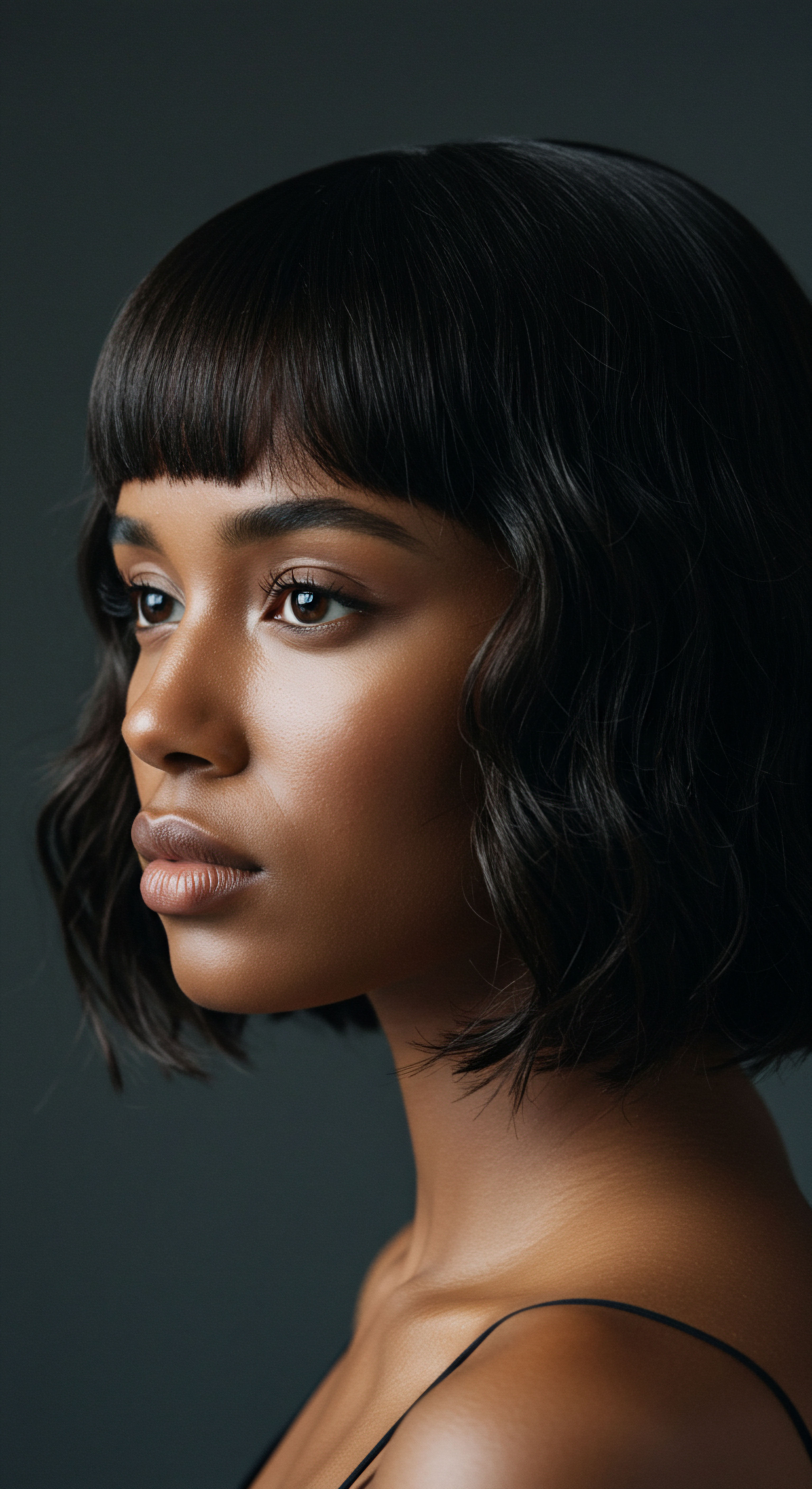
Tailoring Application to Porosity
The art of applying oils truly shines when customized to hair porosity.
For Low Porosity Hair, the goal is to encourage the cuticles to open just enough to receive moisture and oils without causing excessive build-up.
- Warmth ❉ Gently warming penetrating oils before application can help them more readily enter the tightly closed cuticles. A warm towel wrap after application can also aid this process.
- Light Application ❉ Use smaller amounts of oil to avoid product sitting on the surface. Focus on distributing the oil evenly.
- Pre-Poo Treatments ❉ Applying a penetrating oil like coconut oil before shampooing can help prevent hygral fatigue (damage from repeated swelling and drying of hair) by reducing the amount of water the hair absorbs during washing.
For High Porosity Hair, the focus shifts to retaining the moisture that the hair so readily absorbs.
- Layering Techniques ❉ The “LOC” (Liquid, Oil, Cream) or “LCO” (Liquid, Cream, Oil) methods are highly favored. Here, a liquid (water or leave-in conditioner) hydrates the hair, followed by an oil to seal that hydration, and then a cream for added moisture and styling. This method helps to lock in moisture effectively.
- Sealing after Hydration ❉ Apply sealing oils after moisturizing products to create a protective barrier that minimizes moisture loss.
- Regularity ❉ High porosity hair often benefits from more frequent oil applications to counteract its tendency to dry quickly.
| Porosity Type Low Porosity |
| Primary Concern Moisture Penetration |
| Recommended Oil Types Penetrating (Coconut, Olive, Avocado) |
| Application Tip Warm oil, use sparingly, pre-poo |
| Porosity Type Medium Porosity |
| Primary Concern Moisture Balance |
| Recommended Oil Types Both penetrating and sealing (Jojoba, Argan) |
| Application Tip Balanced application, as needed |
| Porosity Type High Porosity |
| Primary Concern Moisture Retention |
| Recommended Oil Types Sealing (Jojoba, Argan, Castor) after hydration |
| Application Tip Layering (LOC/LCO method), regular use |
| Porosity Type Selecting oils that complement your hair's porosity enhances moisture management and overall hair health. |
Even with the scientific distinctions, the true efficacy of oils often lies in observation and personal experience. What feels light and nourishing to one person might feel heavy to another. The beauty of this ritual is its adaptability, allowing for personal discovery in the pursuit of healthy, vibrant strands.
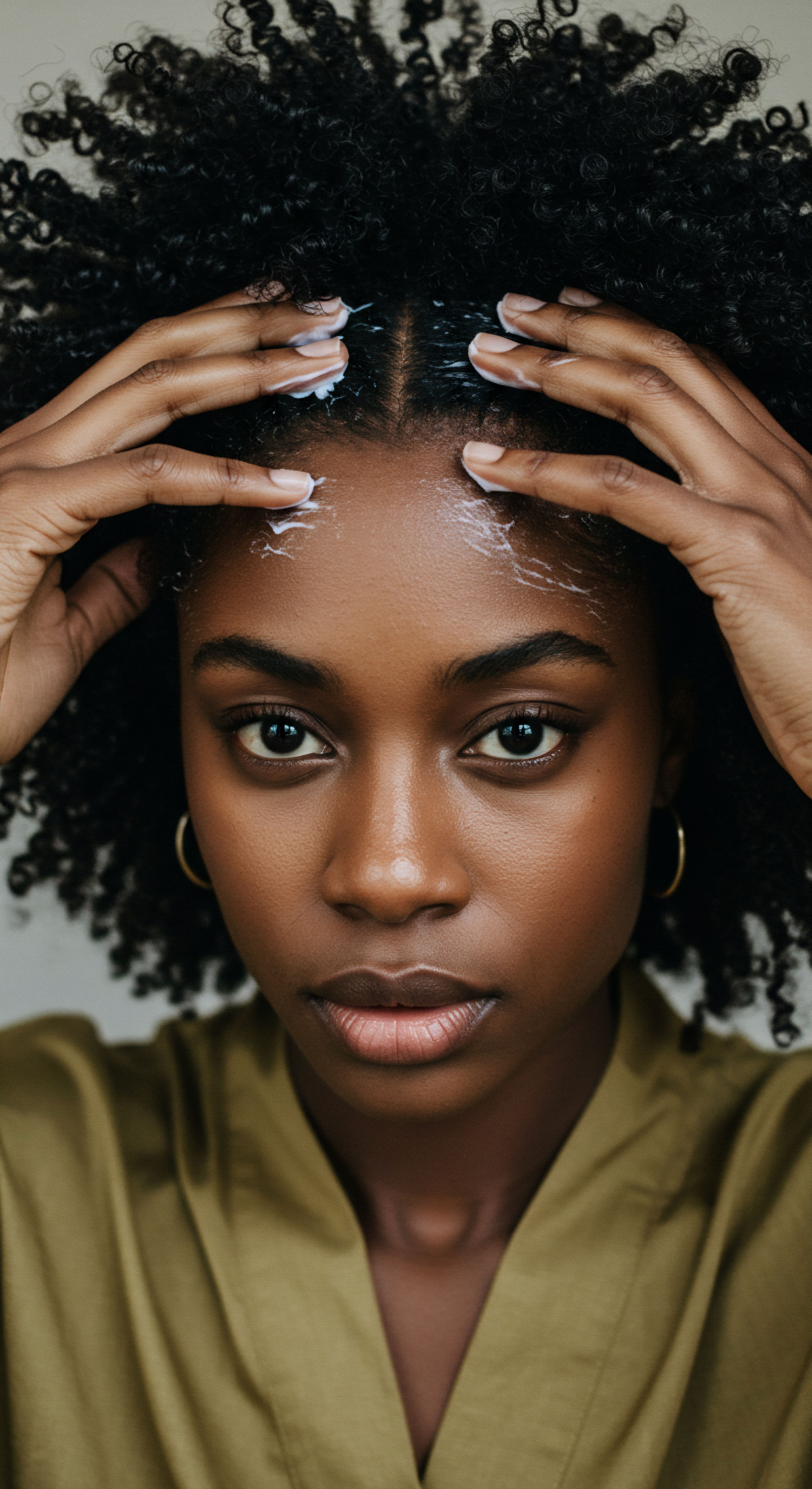
Relay
As we delve deeper into the interplay between oils and hair porosity, we move beyond the observable ritual into a realm where scientific inquiry meets the enduring wisdom of tradition. How does the molecular structure of an oil truly interact with the delicate architecture of the hair shaft, particularly when that architecture has been altered? And what insights can we gain from the often-overlooked data points that challenge conventional wisdom, inviting a more profound understanding of our hair’s response to oils? This section invites us to consider the complexities, drawing upon research that illuminates the unseen forces at play, while acknowledging the rich cultural tapestry that has long held oils in high esteem for hair care.
The interaction between oils and hair at a microscopic level is a complex dance of molecular affinities and structural responses. Scientific studies have shown that an oil’s ability to permeate the hair fiber is not solely determined by its fatty acid composition and molecular weight, but also by factors such as its polarity and the specific condition of the hair’s cuticle and internal cell membrane complex (CMC). The CMC, a lipid-rich region between cuticle and cortical cells, acts as a primary pathway for substances entering the hair.
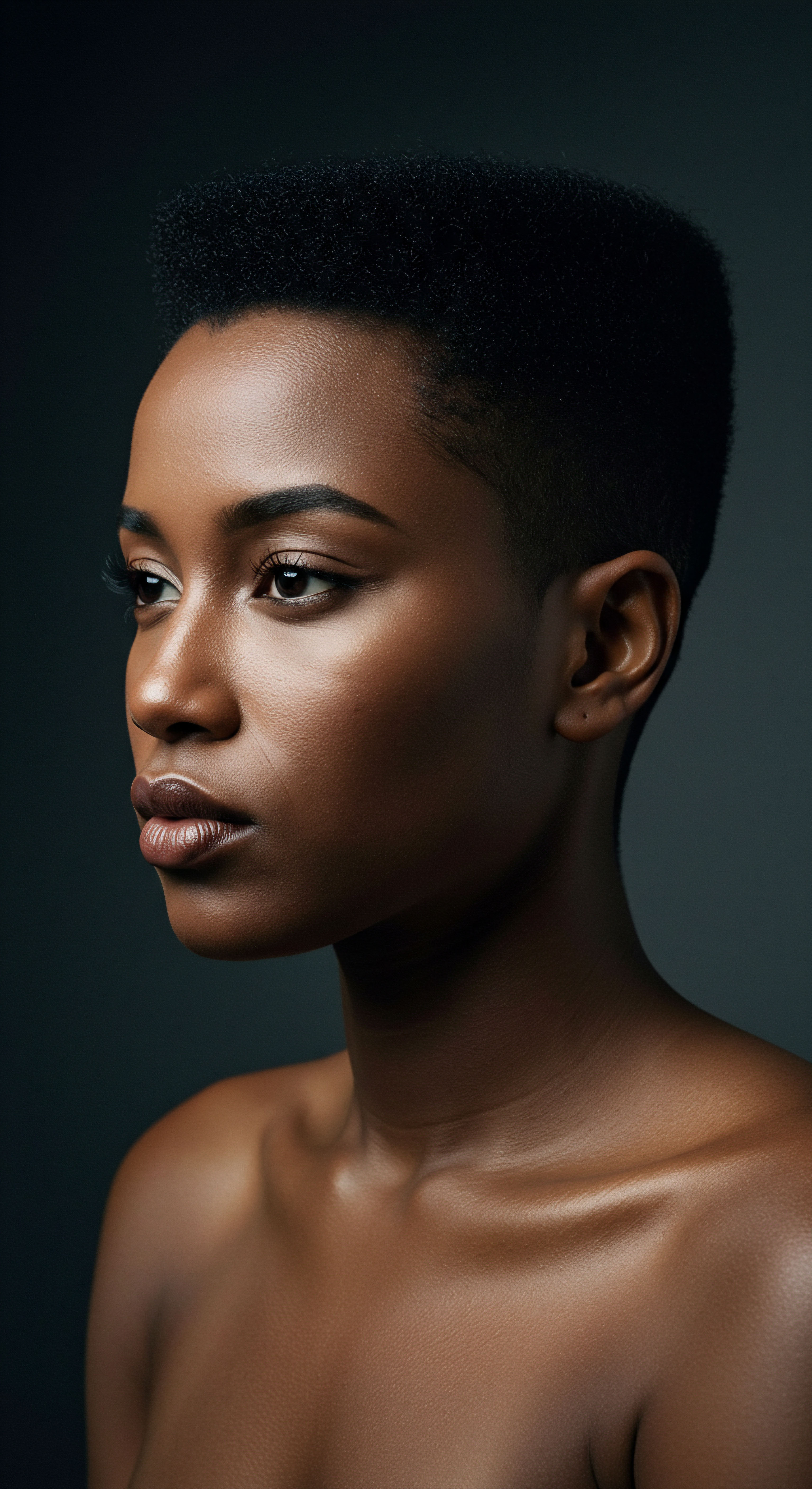
Do All Oils Penetrate Hair the Same Way?
Research has consistently highlighted coconut oil’s unique ability to penetrate the hair shaft due to its high affinity for hair proteins and its small molecular size, primarily attributed to lauric acid. Studies using techniques like NanoSIMS have confirmed that coconut oil can indeed partition into the lipid-rich CMC, delivering benefits like reduced protein loss and improved hydrophobicity, especially in virgin hair.
However, the narrative surrounding other oils is more nuanced. While oils like olive and avocado are also considered penetrating, their degree of permeation can differ. Argan oil, for instance, with its higher content of oleic and linoleic acids, often forms a protective film on the surface, offering shine and frizz control, rather than deep internal conditioning. This surface action is still beneficial, particularly for damaged hair, but it operates through a different mechanism.
The molecular architecture of an oil dictates its path, whether it seeks to permeate the hair’s core or to gently veil its surface.
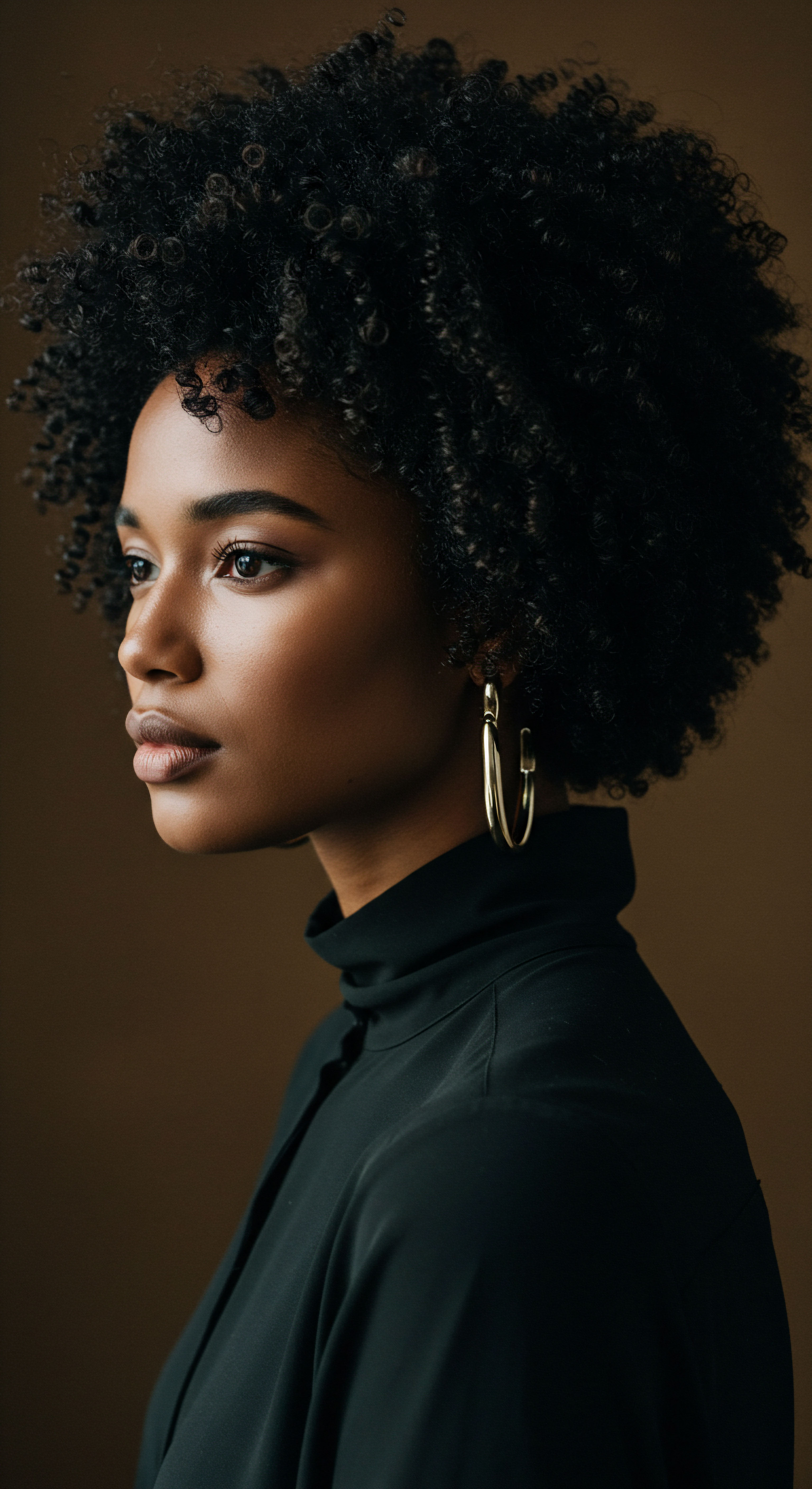
The Controversial Data Point ❉ Oleic Acid’s Dual Nature
Here, we arrive at a compelling data point that often sparks discussion ❉ the role of Oleic Acid. Oleic acid, a monounsaturated fatty acid, is a major component of many common oils, including olive oil (over 50%) and avocado oil. Traditionally, oils with higher oleic acid content were considered moderately penetrating. However, some research presents a more intricate picture, particularly concerning damaged hair.
A study investigating the impact of oils on virgin and bleached Caucasian hair found intriguing results regarding argan oil, which is rich in oleic and linoleic acids. While coconut and avocado oils reinforced the hydrophobic barrier in virgin hair, preventing intense water perturbation and leading to increased stiffness and break stress, argan oil exhibited a different effect. Due to the high degree of unsaturation in its fatty acid chains, Argan Oil Actually Increased Water Absorption in Virgin Hair, Resulting in Losses in Hair Resistance. This suggests that while oleic acid-rich oils might offer surface benefits and some penetration, their interaction with the hair’s internal structure, especially when virgin, can be complex and may not always align with simple ‘penetrating’ or ‘sealing’ classifications.
When hair is bleached, its hydrophilicity increases, which then creates a greater affinity for argan oil, allowing it to diffuse in higher amounts through the cortex compared to coconut or avocado oil in this damaged state. This shift in affinity highlights how hair’s condition dictates oil interaction.
This finding challenges the straightforward categorization of oils and underscores the dynamic nature of hair-oil interactions, especially when hair is compromised. It compels us to consider not just the oil’s composition, but also the hair’s current state—virgin, colored, heat-styled—when predicting its response. The molecular shape of oleic acid, with its cis double bond creating a ‘kinked’ structure, has been theorized to allow for deeper penetration into the hair cortex compared to straight-chained saturated fatty acids. Yet, its effect on water absorption, as seen in the argan oil study, suggests that deeper penetration does not always equate to improved water retention, particularly for virgin hair.
| Oil Type Coconut Oil |
| Primary Fatty Acids Lauric Acid (Saturated) |
| Interaction with Virgin Hair Reinforces hydrophobic barrier, reduces protein loss. |
| Interaction with Bleached Hair Penetrates well, reduces Young's modulus and break stress. |
| Oil Type Avocado Oil |
| Primary Fatty Acids Oleic, Palmitic Acids (Mono/Saturated) |
| Interaction with Virgin Hair Reinforces hydrophobic barrier. |
| Interaction with Bleached Hair Penetrates, reduces Young's modulus and break stress. |
| Oil Type Argan Oil |
| Primary Fatty Acids Oleic, Linoleic Acids (Mono/Polyunsaturated) |
| Interaction with Virgin Hair Increases water absorption, reduces resistance. |
| Interaction with Bleached Hair Higher affinity, diffuses more through cortex, significant reduction in Young's modulus and break stress. |
| Oil Type The efficacy of an oil can shift dramatically based on the hair's structural integrity. |
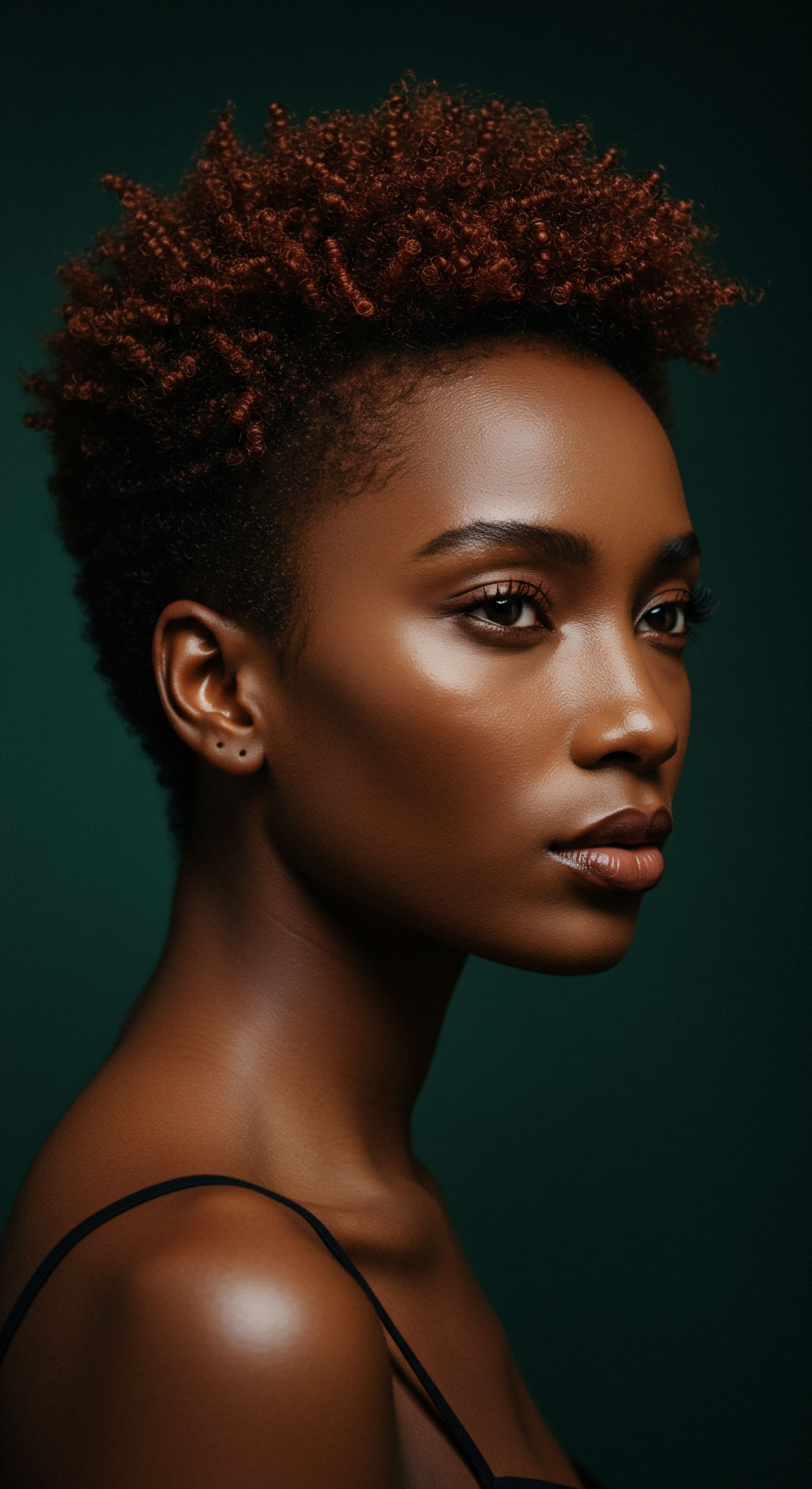
Beyond the Surface ❉ Oil Films and Diffusion
Beyond direct penetration, oils influence hair porosity by forming films on the surface and altering moisture diffusion. Research using dynamic vapor sorption (DVS) apparatus has shown that hair fibers treated with various oils exhibit lower “equilibrium” sorption of moisture compared to untreated samples. This indicates that oil films, even thin ones, act as a diffusion barrier, slowing the loss of moisture from the hair.
A study demonstrated that while oil treatment reduced moisture pickup, a considerable amount of moisture vapor could still enter the hair fibers. Crucially, the calculated moisture diffusion coefficients for oil-treated samples were significantly lower than for untreated hair, confirming that both surface oil films and permeated oil molecules collectively restrict moisture movement. This effect is akin to “moisturization,” as it helps maintain hydration levels within the hair over time.

Cultural Echoes and Scientific Validation
Across diverse cultures, particularly within communities with textured hair, oils have held a revered place in hair care for generations. From ancestral practices involving shea butter and various plant extracts to contemporary layering methods like the LOC/LCO, the intuitive application of oils has long served to protect, soften, and beautify. These practices, often passed down through families, implicitly recognized the hair’s need for both internal nourishment and external protection—principles now increasingly validated by scientific investigation.
The collective experience of individuals with textured hair, who frequently use product layering to maintain moisture, stands as a testament to the practical benefits of oils. While scientific instruments may measure molecular changes and diffusion rates, the lived satisfaction of consumers with softer, more manageable hair provides equally compelling evidence of oils’ profound impact. This confluence of ancient wisdom and modern science offers a holistic perspective on hair care, honoring both tradition and discovery.
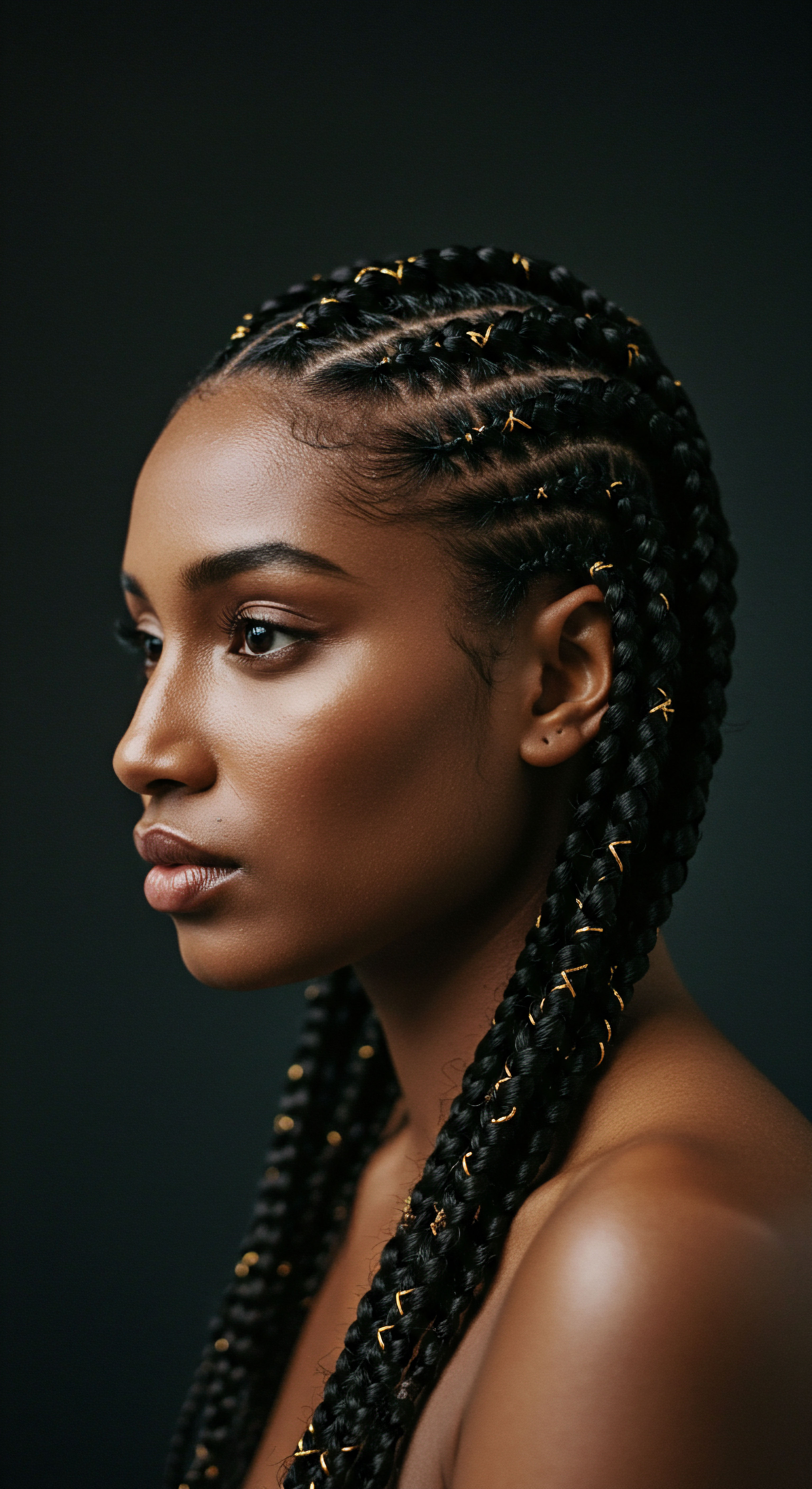
Reflection
Our exploration of oils and hair porosity concludes not with a definitive answer, but with a deeper appreciation for the intricate dance between nature’s gifts and our hair’s unique structure. We have seen how the subtle architecture of the cuticle, the molecular nuances of various oils, and the lived experience of generations all converge to shape the health and appearance of our strands. There is a quiet wisdom in understanding that hair care is less about rigid rules and more about attuned observation, a gentle dialogue with our hair’s needs.
As we continue to learn, perhaps the greatest insight lies in recognizing the profound connection between scientific discovery and the enduring traditions that have long celebrated the beauty of textured hair. This understanding invites us to approach our routines with greater intention, acknowledging the heritage that guides our hands and the science that illuminates our path.

References
- 1. Evans, R. (2020). An Overview on Hair Porosity. NYSCC.
- 2. OBLOOM. (2024). Oils That Penetrate vs. Oils That Seal the Hair. Truu by Nature.
- 3. Dias, M. F. R. G. et al. (2015). Investigation of penetration abilities of various oils into human hair fibers. International Journal of Cosmetic Science, 28(2), 78.
- 4. McMullen, R. & Jachowicz, J. (2023). Hair Lipid Structure ❉ Effect of Surfactants. Cosmetics, 10(4), 108.
- 5. Verb Products. (2025). Hair Porosity Explained ❉ Types, Tests and Care Tips.
- 6. WebMD. (2024). What to Know About High Porosity Hair.
- 7. Satthwa. (2024). The Science Behind Hair Oils ❉ How They Nourish and Strengthen Your Hair.
- 8. Lee, S. K. et al. (2014). Material Characteristics of Hair Cuticles after Hair Oil Treatment. Journal of Nanomaterials, 2014.
- 9. Higuera, V. (2019). What Type of Hair Porosity Do You Have? Healthline.
- 10. Kavella. (2022). Moisturizing Oils vs. Sealing Oils ❉ Which is Best for Your Hair?
- 11. Curlsmith. (n.d.). How to Identify Your Hair Porosity.
- 12. African Pride. (n.d.). Natural Hair Care 101 ❉ Choosing The Right Oil For Your Hair Type.
- 13. Plaine Products. (n.d.). What is Hair Porosity and Why It Matters.
- 14. AAYNA Clinic. (2024). Hair Porosity 101 ❉ Types, Causes and Treatments.
- 15. Carol’s Daughter. (2023). What You Need to Know About Hair Porosity.
- 16. Verywell Health. (2025). 14 Essential Oils that Promote Faster Hair Growth.
- 17. Kavella. (2022). Everything You Need to Know About the Benefits of Oil for Hair and Scalp.
- 18. Lemma. (2024). The Science of Hair Oils ❉ Penetration, Protection, and Practical Use.
- 19. Reddit. (2023). Good hair oils for penetration and sealing? r/HaircareScience.
- 20. CN106999396B. (2017). Composition for enhancing hair fiber properties. Google Patents.
- 21. YouTube. (2021). RESEARCH BASED best PENETRATING oils vs SEALING oils #bestpenetratingoils #bestoilsfornaturalhair.
- 22. Dias, M. F. R. G. et al. (2024). Penetration of oils into hair. International Journal of Cosmetic Science.
- 23. Rele, A. S. & Mohile, R. B. (2003). Hair Oils ❉ Indigenous Knowledge Revisited. International Journal of Trichology, 5(1), 2–10.
- 24. Rodrigues, A. et al. (2024). Impact of Hair Damage on the Penetration Profile of Coconut, Avocado, and Argan Oils into Caucasian Hair Fibers. Cosmetics, 11(2), 58.
- 25. Curly Hair Berlin. (n.d.). Curly Hair Science ❉ Understanding Hair Structure, Follicles & Porosity.
- 26. Theradome. (2025). 3 Types of Hair Porosity ❉ How to Test Porosity Under Water?
- 27. Keis, K. et al. (2007). Effect of oil films on moisture vapor absorption on human hair. Journal of Cosmetic Science, 58(2), 135-145.
- 28. Quora. (2022). Can I mix argan oil, jojoba oil, and castor oil together for hair?
- 29. Wimpole Clinic. (2024). High Porosity Hair ❉ The Definitive Guide For Porous Hair.
- 30. Olive Oil Home. (2024). Oleic Acid in Hair Care ❉ Forget Chemicals, Embrace Nature.
- 31. Li, J. et al. (2022). Development of Tea Seed Oil Nanostructured Lipid Carriers and In Vitro Studies on Their Applications in Inducing Human Hair Growth. Gels, 8(5), 291.
- 32. Dr.UGro Gashee. (2018). The Research on Oleic Acid for Hair Loss.
- 33. Wimpole Clinic. (2024). Benefit of Coconut-Based Hair Oil via Hair Porosity Quantification.
- 34. Keis, K. et al. (2007). Effect of oil films on moisture vapor absorption on human hair. PubMed.
- 35. Liu, H. et al. (2023). Advances in Permeation of Solutes into Hair ❉ Influencing Factors and Theoretical Models. Cosmetics, 10(3), 77.
- 36. Mogoş, T. et al. (1994). The hair levels of unsaturated fatty acids (oleic, linoleic, and linolenic) indicators of the lipid metabolic balance. Romanian Journal of Internal Medicine, 32(2), 159–163.
- 37. Rodrigues, A. et al. (2024). Impact of Hair Damage on the Penetration Profile of Coconut, Avocado, and Argan Oils into Caucasian Hair Fibers. ResearchGate.
- 38. Keis, K. et al. (2006). Investigation of penetration abilities of various oils into human hair fibers. Olive Oil Times.
- 39. Marico R&D Center, et al. (2022). Benefit of Coconut‐Based Hair Oil via Hair Porosity Quantification. ResearchGate.
- 40. Marico R&D Center, et al. (2022). Benefit of Coconut‐Based Hair Oil via Hair Porosity Quantification. PubMed.
- 41. Hair Free Hair Grow. (2024). Understanding High Porosity Hair and its Impact on Hair Care.